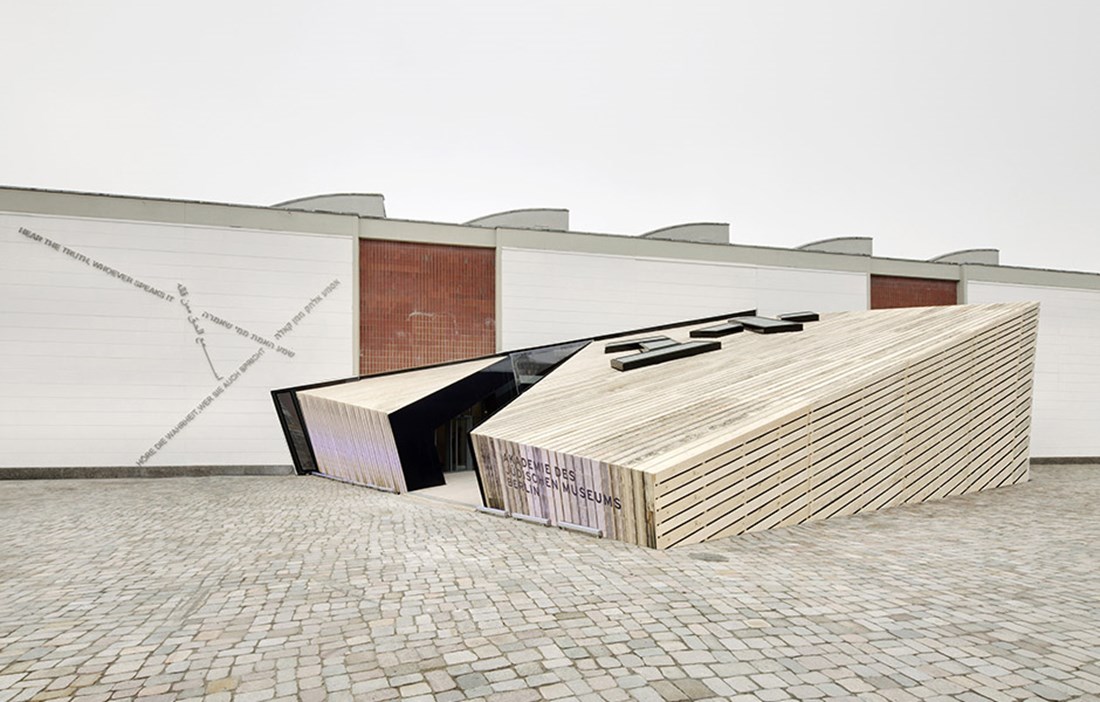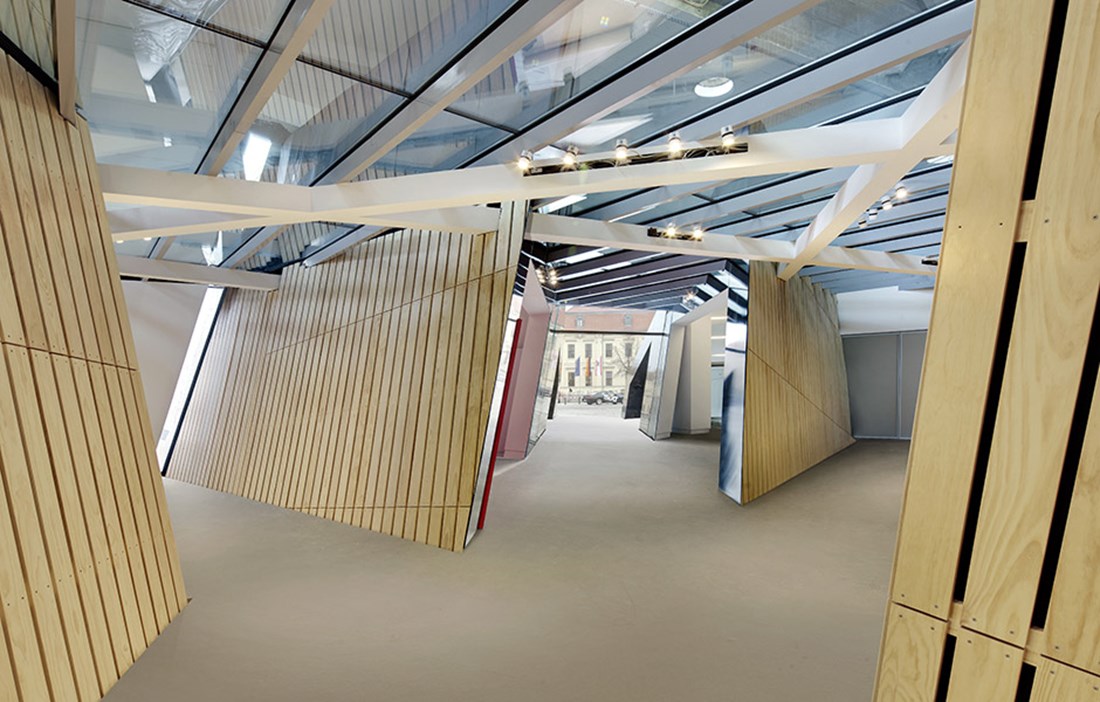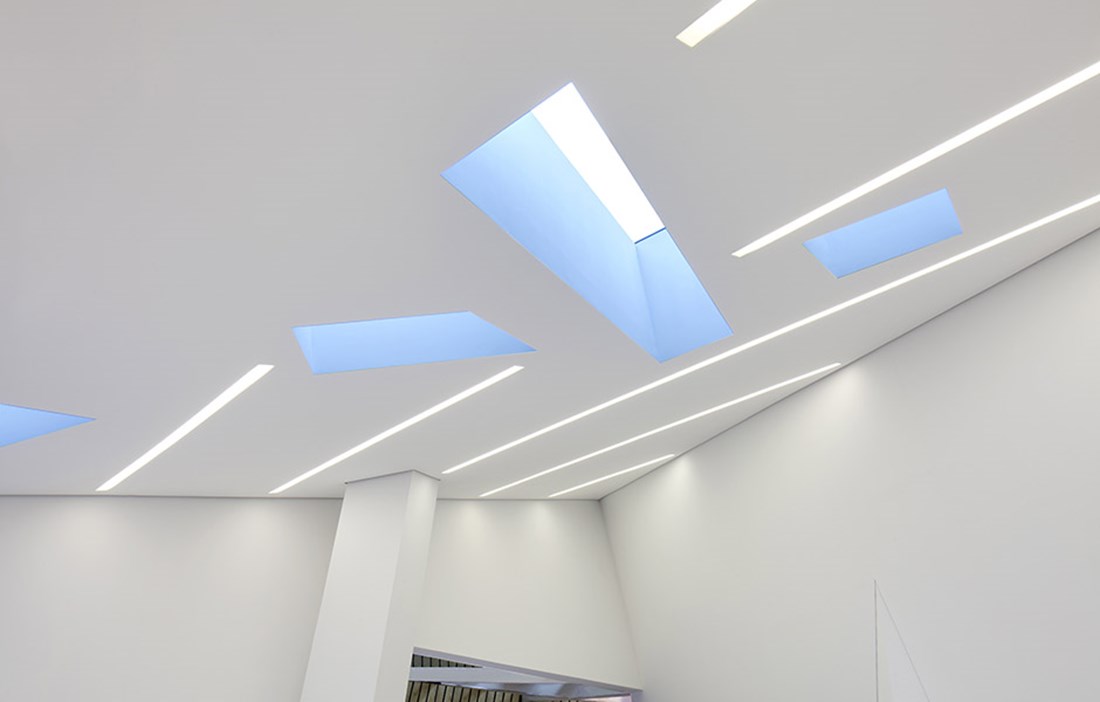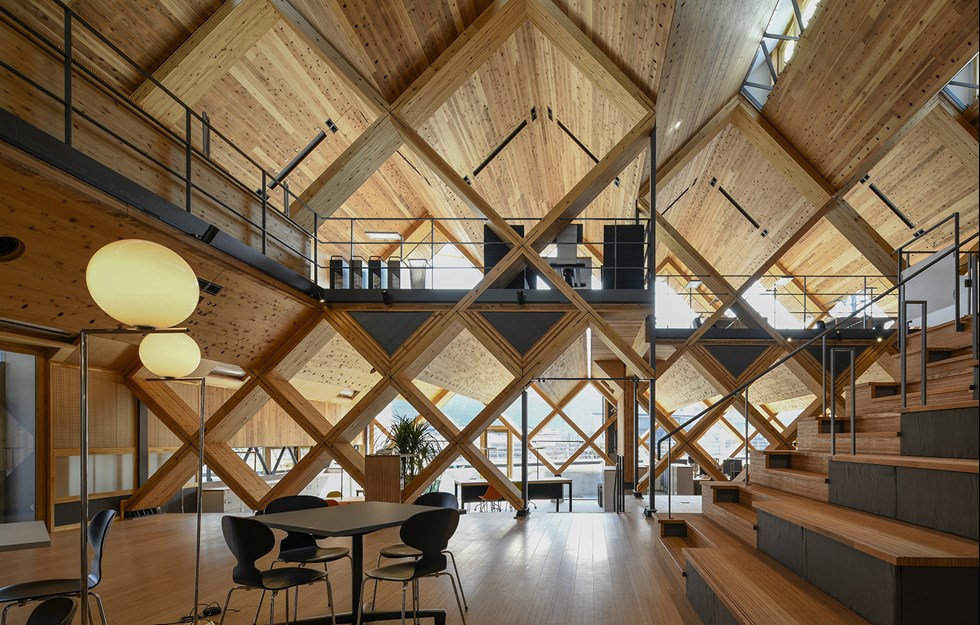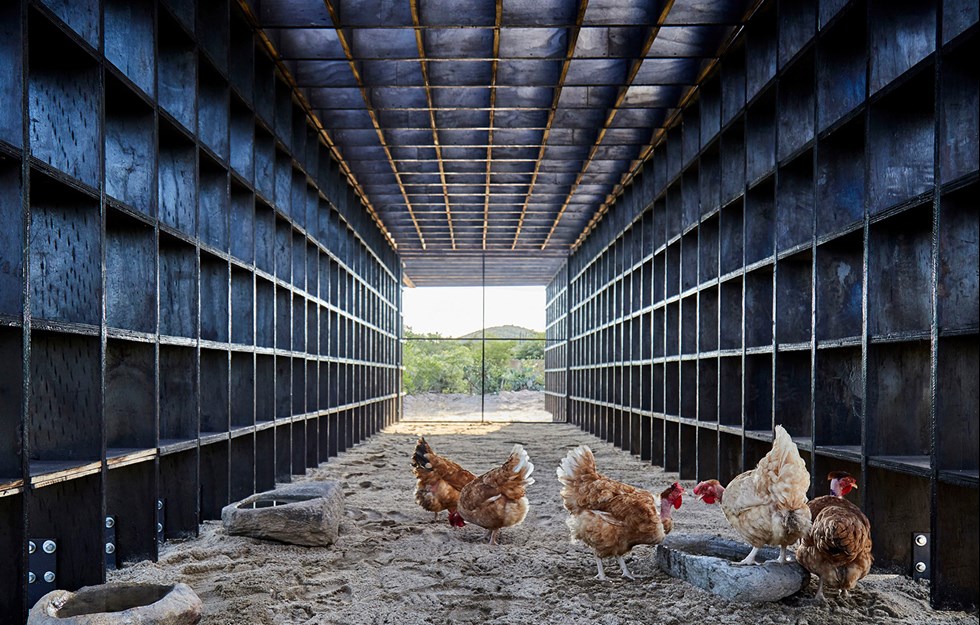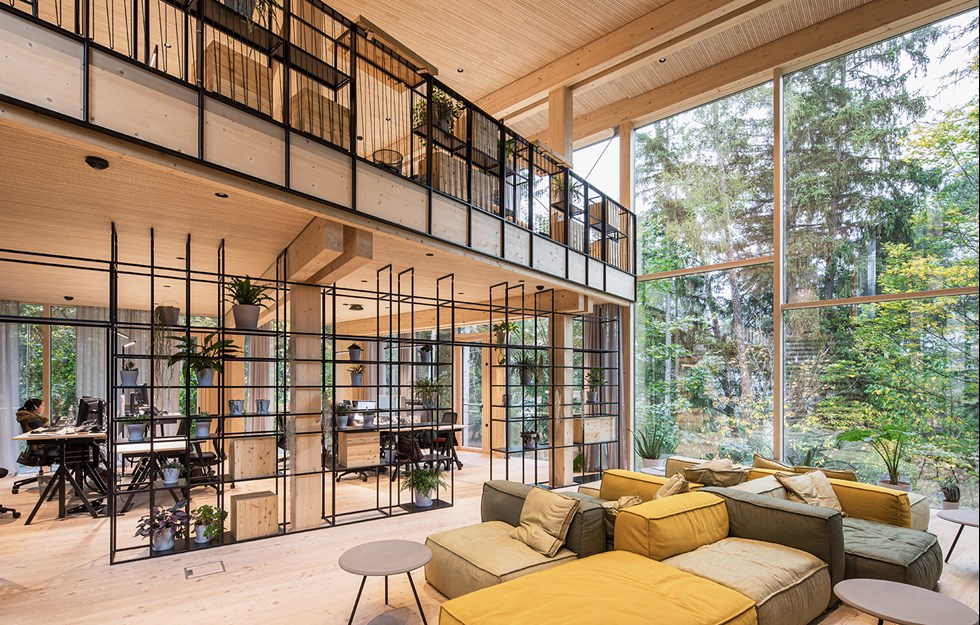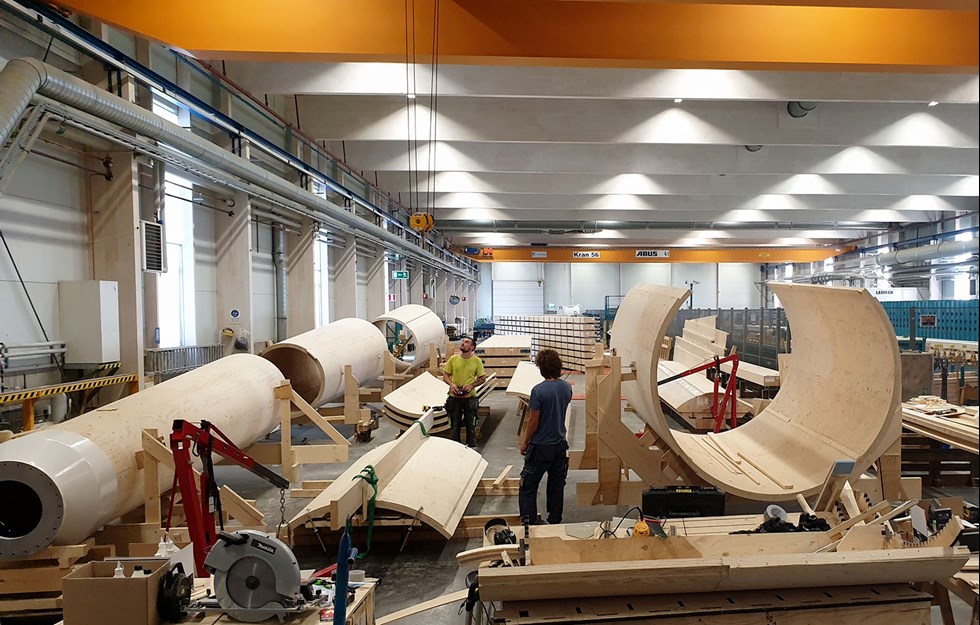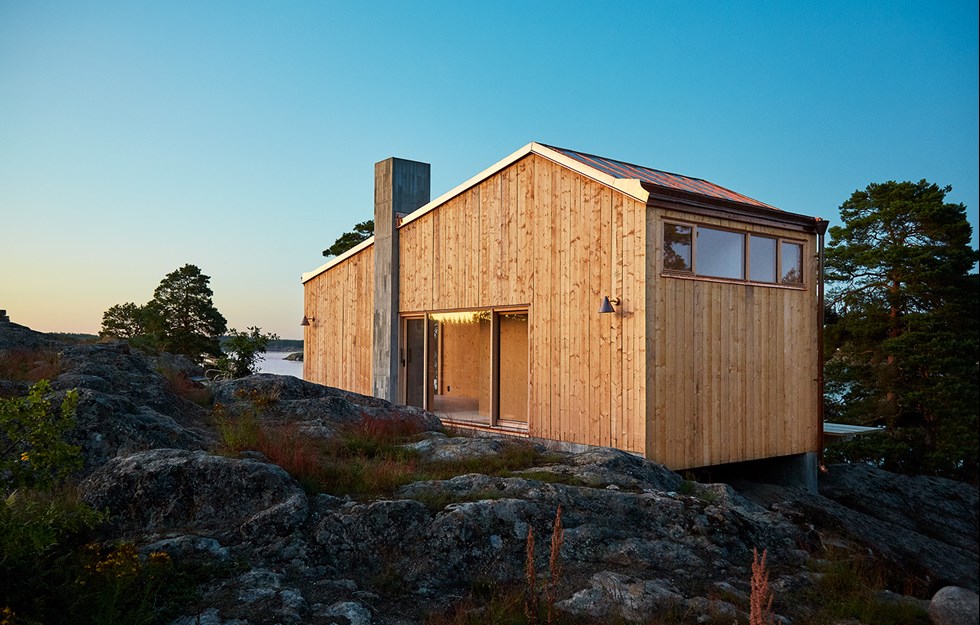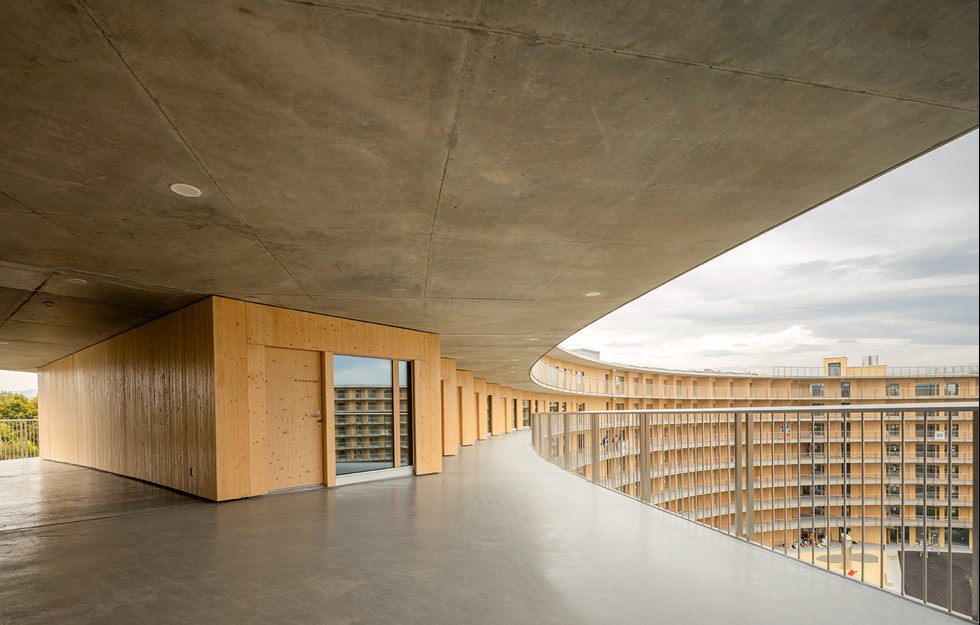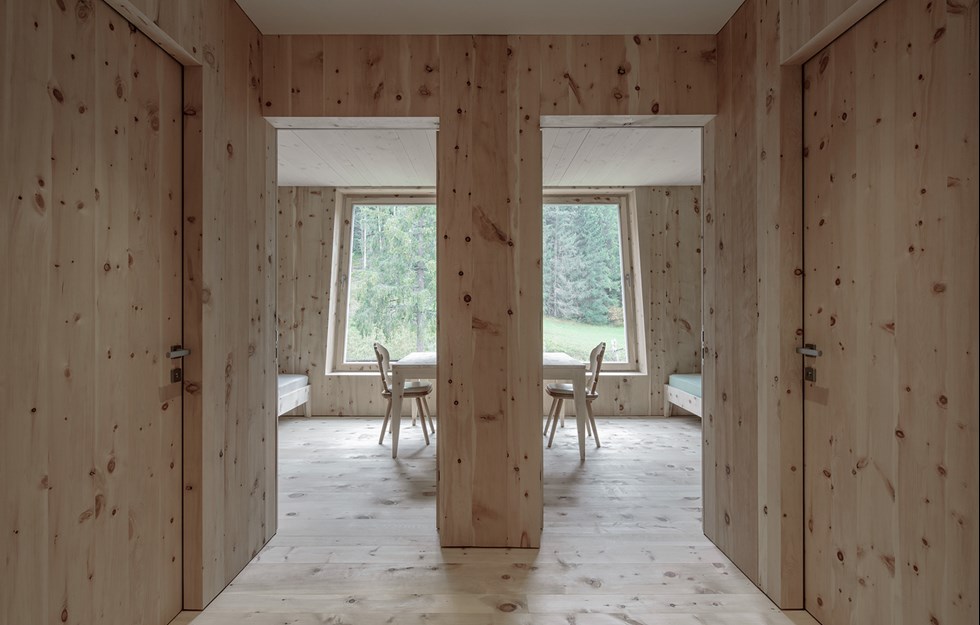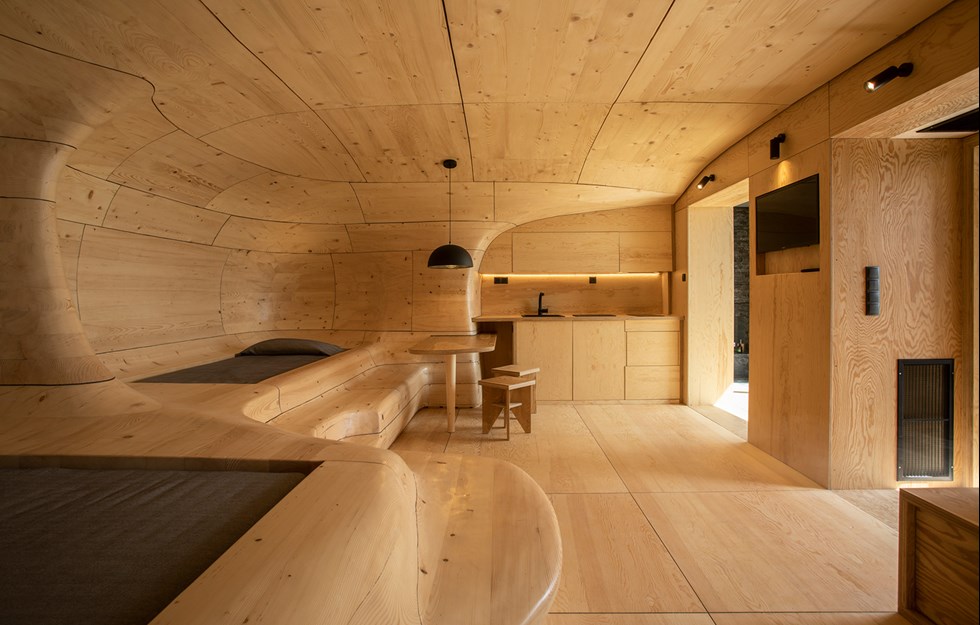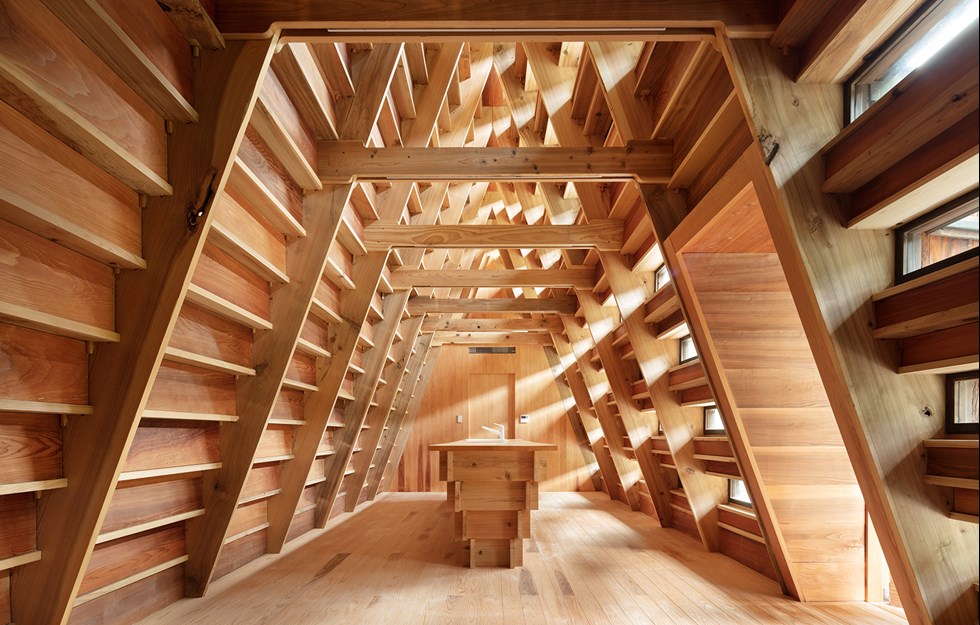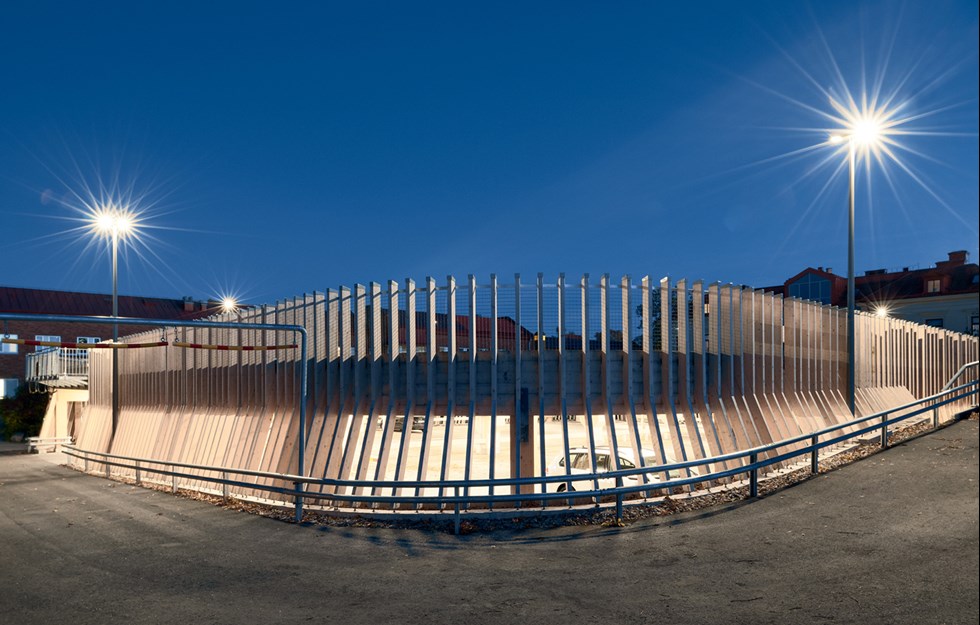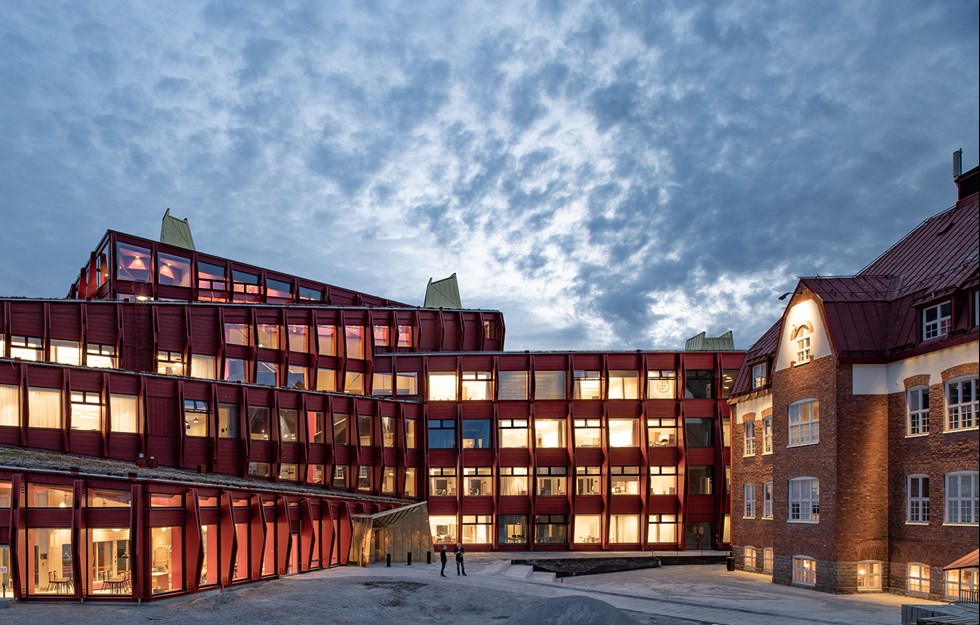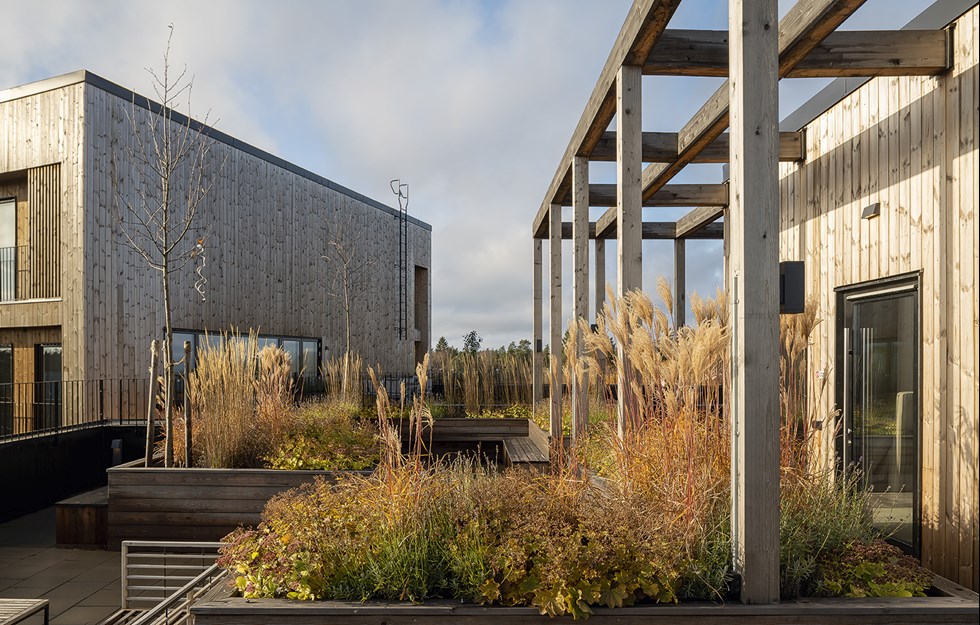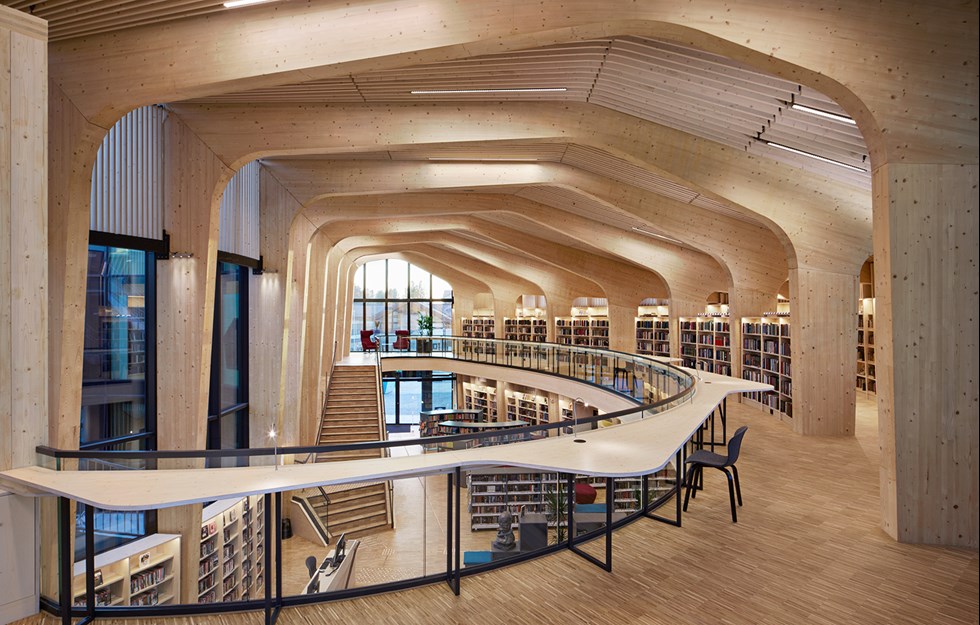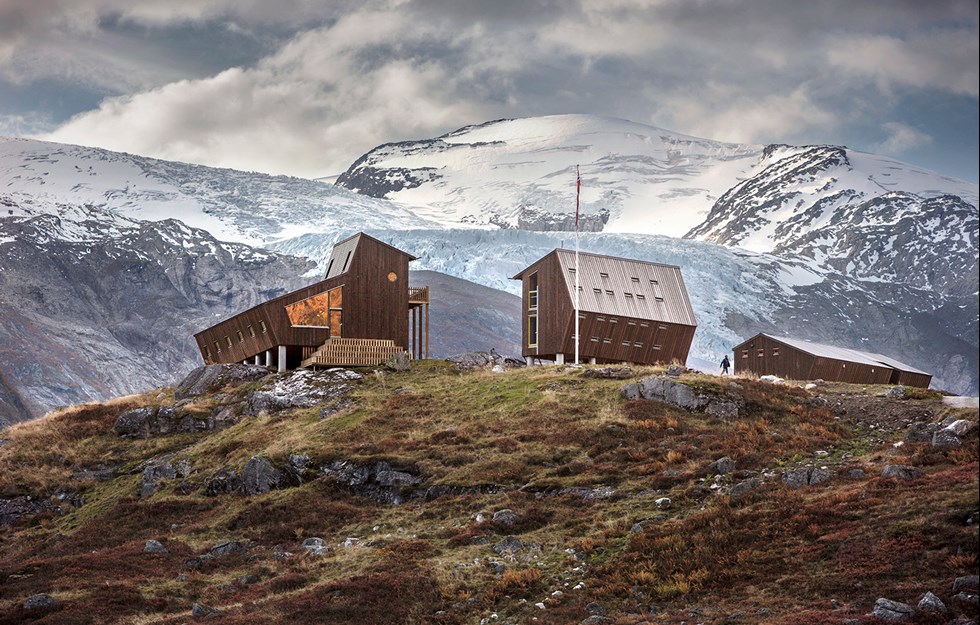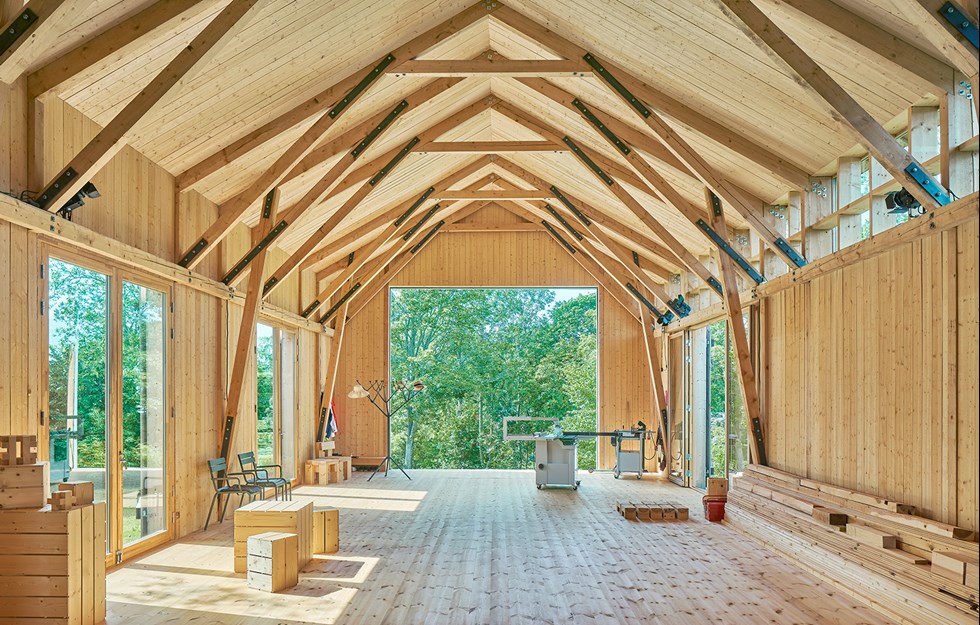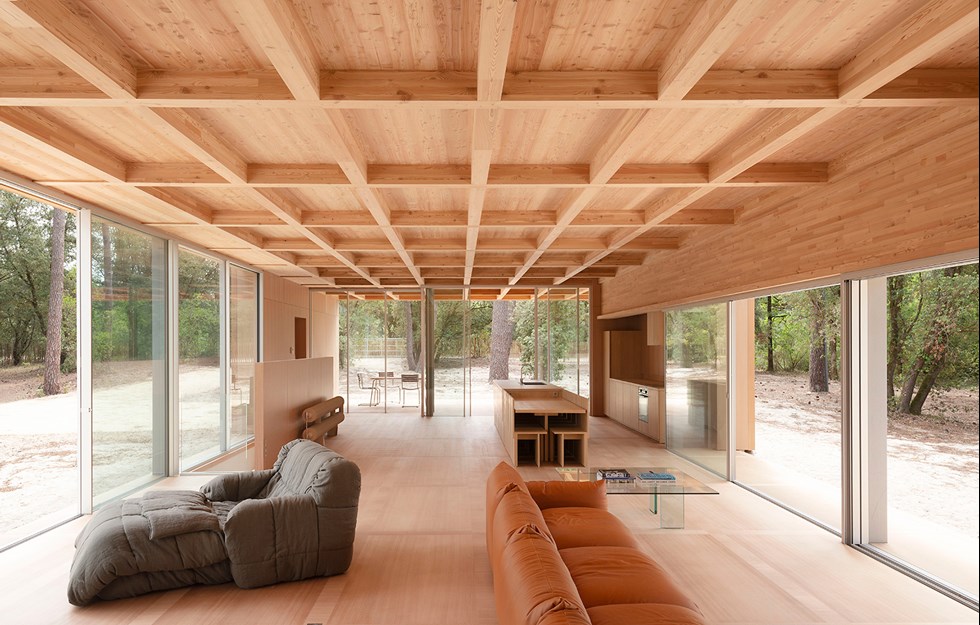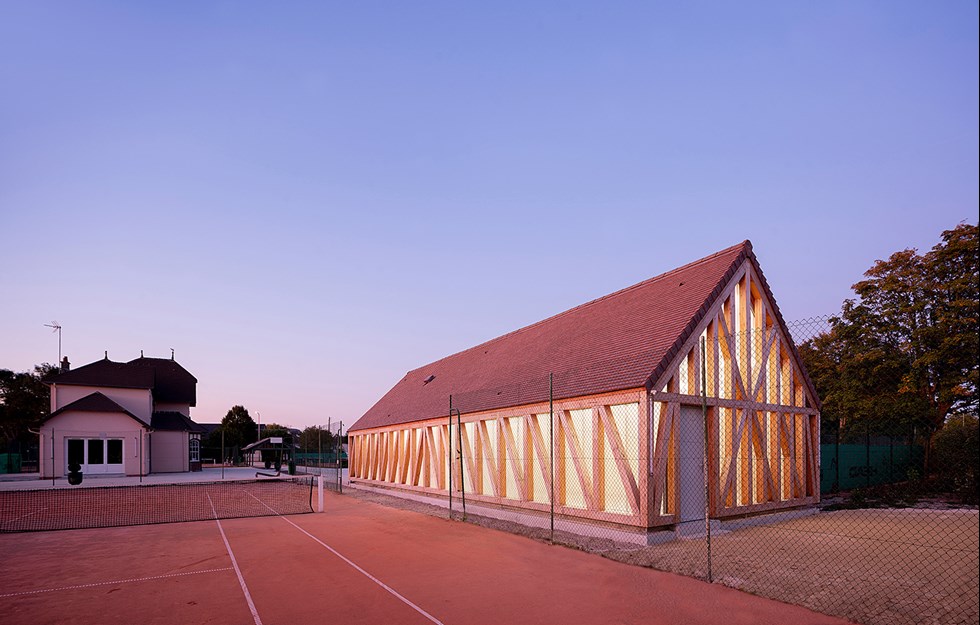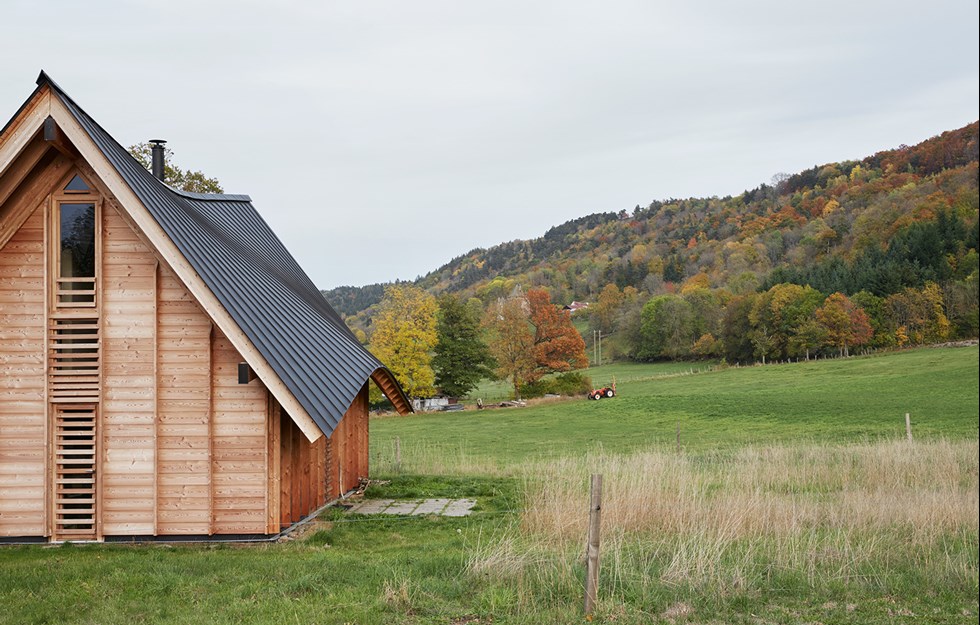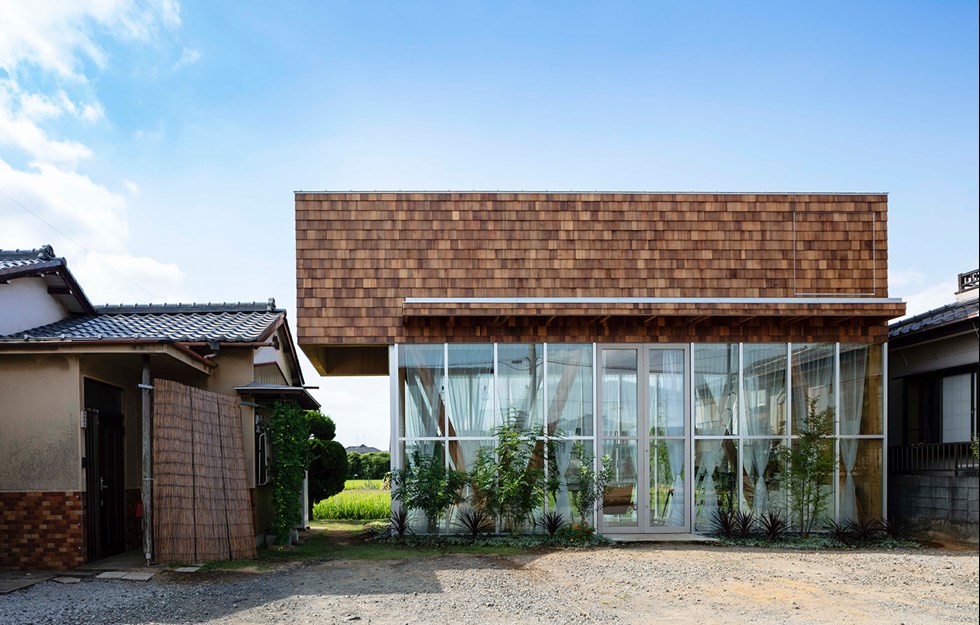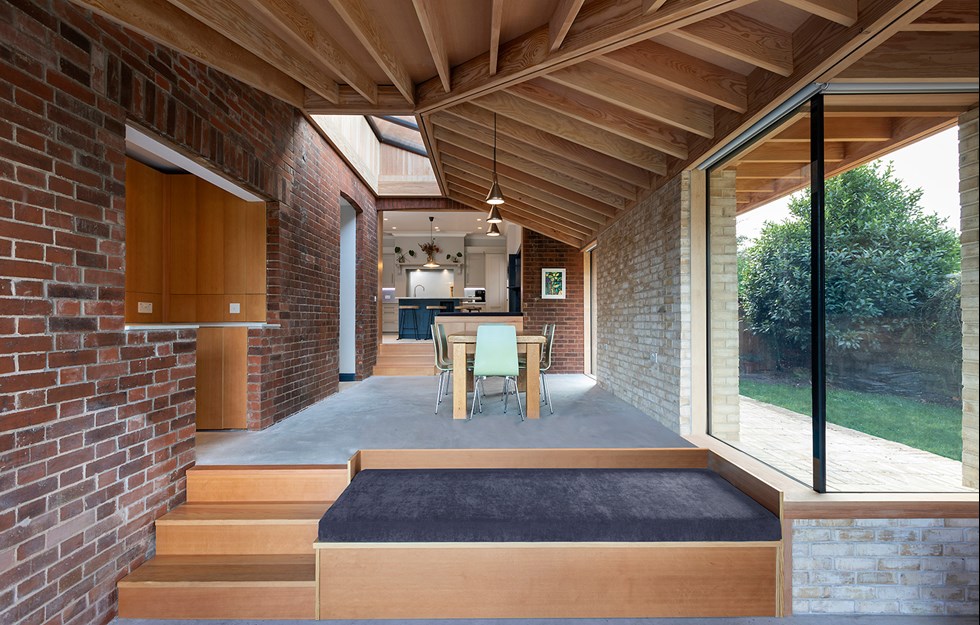THE JEWISH MUSEUM’S new Academy is being built right across the street, on the site of what was once Blumengrossmarkt, Berlin’s flower market. The three crate-like entities in wood all have different geometric shapes, on a theme also found in the Garden of Exile and the Glass Courtyard that was added six years ago. However, the project is about more than just shape; it also makes a cultural and social statement. The Academy is something of a city in miniature, binding together the history of Berlin and the history of the Jews.
“We’ve used wood because it is beautiful, intimate and humane. Wood symbolises something organic and the building is like Noah’s Ark, filled with knowledge. These units look like huge crates and they symbolise a piece of history that is returning to Berlin – they are more objects than buildings. We have striven to create space between the units and interlink the various activities of the Academy. We have also scaled things down for the benefit of all the children who come here,” explains Daniel Libeskind.
The skylights illuminating the Academy’s wood-panelled entrance cube are inspired by the two Hebrew letters Alef and Bet. They are also a reminder that learning and knowledge are important aspects of Jewish culture. Beyond the entrance lies a hall containing two more, larger cubes that house the library and an auditorium. Here too the timber-clad walls shoot in different directions, energising the in-between spaces, in line with the idea of ‘Zwischenräume’, Libeskind’s title for the annex project.
THE ACADEMY’S ROOMS are made from roughly cut pine. The three cubes were prefabricated, reducing the construction work to just a few days.
Jorg Enseleit, designer at the engineering firm GSE in Berlin, explains that wood was chosen to achieve good spans with a lightweight design.
“All of the cubes are insulated because the old hall is not heated. The roofs of the interior cubes comprise boxes made from Kerto, a laminated veneer lumber, glued together and filled with insulation, while the exterior cube has TT-shaped Kerto elements with a similar solution.”
The cubes’ foundation plates are also insulated. Jorg points out that the geometry of the exterior cube is extremely complex, which is why steel was used as a supplementary material. The Leno walls and Kerto-Ripa panels come from FinnForest, and have been screwed together. Special steel plates have been used to join the roof and walls in some places. Two of the cubes are undercover and have been treated with wax, while the third stands outside and has instead been coated with a wood protector called Holzschutzcreme.
The Jewish Museum holds around 7000 museum tours per year and offers over 4000 courses, everything from children’s activities to training for museum staff. The new building will provide conference and seminar rooms along with space for all the administration. The archives, which have doubled in size since the museum opened, will now have room to spread out properly. Activities for children and young people play an important role in the Academy, which has an agreement with one of the Kreuzberg district’s larger schools. Of the 314 students, the majority come from a Muslim background. In addition to leading discussions on Islam and Judaism, the Academy will also focus on issues of migration and diversity.
The Jewish Museum Berlin is one of the largest in Europe. It opened in 2001, 12 years after Libeskind defied all the odds to win the open architectural competition. With the help of his wife and promoter Nina Libeskind, who in the past has masterminded election campaigns in Canada, the project was brought to fruition. Together they produced a museum with sloping walls, high narrow rooms, steep steps and not least 1005 windows – each one of a different size. All the windows refer to a unique memory drawn from the history of Berlin. A narrow window in a 27 metre-high room lets in stark daylight and derives from one woman’s recollection of the train journey to Auschwitz: The light flickering behind a grille, the lights in the tunnels, dreams of clouds and the sun, and the hope of once again seeing daylight.
The exterior of the museum, which is clad in crisp zinc, was tattooed with these distorted windows, almost like an address book for every one of those murdered by the Nazis. Empty spaces in the museum are crisscrossed by narrow walkways and all of them tell the story of Berlin’s lost soul. It was not so much a question of deconstructing history and creating a new historical perspective. It was more about creating the space to tell a story that had long been neglected. Daniel’s Jewish heritage was of course perfect for the task. Many of his relatives had perished in the concentration camps: If anyone was going to be able to create something unique that went beyond conventional museum architecture, it was him. The result was startling and, together with Frank Gehry’s Guggenheim Museum Bilbao in Spain, it sparked an international revolution in architecture. Since the opening of these two museums, architects and designers around the world have had their eyes opened to a new type of architecture – one that not only fulfils a function as a building, but that is also an instrument for society to rediscover its soul.
It took a while, however, for an exhibition to be created, since the management was unable to agree on who should lead the museum. Nevertheless, in its first two years the museum still enjoyed record visitor numbers, since the architecture itself told the story. The architecture in many respects goes beyond the exhibited objects and has managed to make the invisible visible. With his building, Libeskind consigned the neutral white museum boxes of Modernism to the scrapheap of history and paved the way for architecture that dares to embrace more than technical functionalism. The architecture aspires to be an artwork of its own that reflects and inspires contemporary culture.
DANIEL READJUSTS HIS horn-rimmed glasses and stresses that the emotional is just as important as the structural. The experience becomes the focus when architecture is more about inclusion and expression than providing a static structure.
“Everyone is interested in life’s big questions. If architecture can’t touch on such issues, it is not worthy of the name. For me, architecture is essentially about ethics. Far too many architects lack belief and instead slavishly follow norms and rules without taking responsibility. They fail to realise that what they build affects people’s lives.”
After countless years working out of Berlin, Libeskind now has his office on Rector Street in downtown Manhattan. He can look out towards Wall Street and the pointed spire of Trinity Church, and immediately outside the white skyscrapers of the early 20th century stretch high up towards the clouds. In the early days of the skyscraper, architects copied the facades from pattern books. The whole of Europe’s cultural history through Renaissance palaces, Greek temples, Art Nouveau and even The Cabinet of Dr Caligari is paraded among all the lofty buildings. Modernism then freed architecture from all this ornamentation in its boxy creations. Libeskind’s own architecture was a reaction against the international style of the day with its absence of narrative, but today he prefers to talk about life on the street between the buildings than about the Deconstructivism that once made him famous.
“The world is changing, all the old ideologies are being challenged. Architecture is an empirical craft. However you look at it, the truth can be found in everyday life and in how people find their place in society. I mean: what is art, what is architecture? Is there really any point in trying to define the word ‘architecture’?”
Daniel Libeskind has designed several Jewish museums, including a temporary museum built entirely from wood in Copenhagen in 2004. 2003 saw him win the competition to design a new World Trade Center and he has recently taken on the design of a peace centre on an old prison site in Northern Ireland. When asked whether he sees himself as a Jewish architect and whether that brings a certain responsibility, he raises his eyebrows and gives a broad smile. He explains that of course he has a responsibility because, like other architects, he designs buildings. But there is also a side of Jewishness that is about discussing life’s big questions. It is not just about ideals and fetishising objects, but more about discussing what is important in life. Impressive and beautiful facades are all very well, but there has to be some content there as well.
“I believe the greatest challenge for architecture today is to relate to our memories. Building sustainably is of course important, but it has been reduced to technical issues. A true ecocycle approach is cultural, it is part of our heart and our soul, it is about being human. Otherwise we are living in an Alzheimer’s world! Remembering is something fundamentally human, memory is structure and for me buildings are like books, but they are written in the spatial design. Architects need to have the courage to provoke and confront. Kafka wrote that he never read books he liked, only those that disturbed and provoked him, those that managed to cut through the ice around his heart!”
The Jewish Museum Berlin and its new addition are far removed from the Modernist mantra ‘Form Follows Function’. Instead it is an architecture that tells a story, provoking questions and emotions.
“The new Academy and the museum itself give Berliners a chance to get to know their city through the lives of their forefathers, through the Holocaust that not only brought death to millions of Jews but also destroyed German culture. Architecture is not all about solving problems, but about asking questions. This is rare in architecture, but not so in philosophy, art and music. Why can’t architecture also tackle the existential questions? They touch us all, not just political decision-makers: Why are we here? Where are we going? What is there beyond the social order of our own existence? What is the meaning of life?
Text Leo Gullbring

